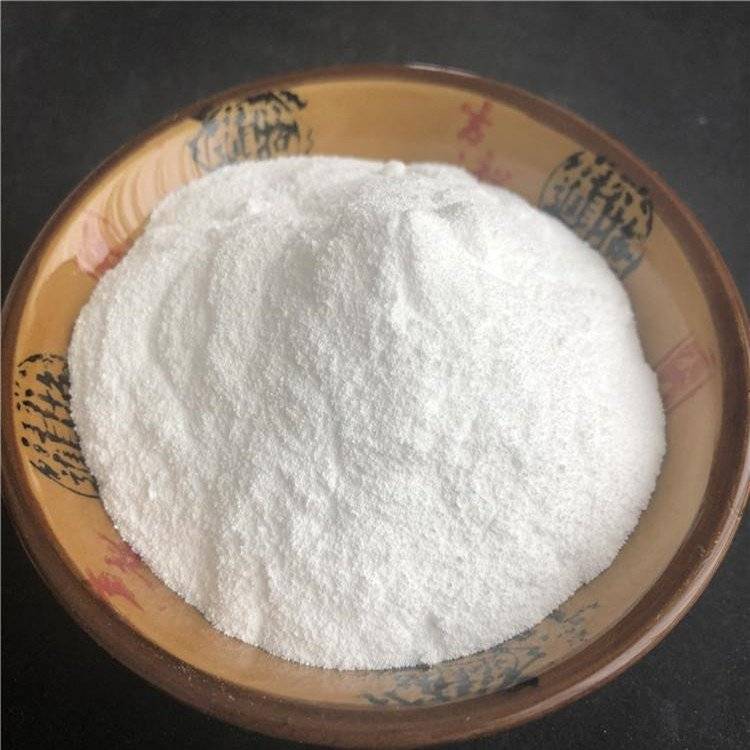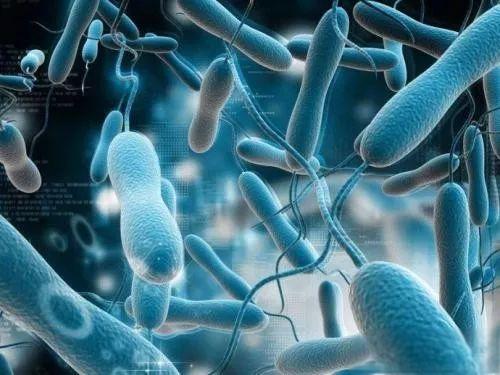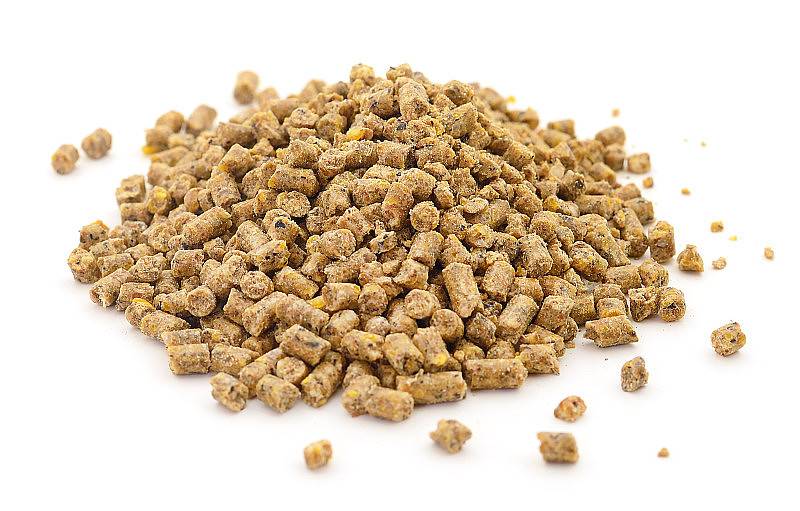Is Isomaltooligosaccharide Healthy?
We usually refer to sugars consisting of 2-10 monosaccharides as oligosaccharides. Most oligosaccharides have low calories, regulate the intestines, boost the body's immunity and have other unique effects. This type of sugar is highly valued in countries around the world because of its wide range of raw materials, low cost and diverse functions. As a result, countries around the world have invested heavily in research and development in this field. In recent years, it has been actively developed as a new functional food ingredient.
Isomaltooligosaccharide (ISOmaltooligosaccharide) is a proven effective growth promoter for bifidobacteria. Bifidobacteria have a beneficial effect on the intestines, removing waste products from the body, breaking down carcinogens, lowering blood cholesterol levels and preventing high blood pressure. They synthesize vitamins and amino acids, prevent constipation and diarrhea, inhibit the growth of many pathogenic and putrefactive bacteria, and enhance the body's immune function. Isomaltooligosaccharide is therefore a healthy base ingredient for health foods. It has a soft sweetness, low viscosity, good moisture retention, low water activity, is easy to store, has good thermal stability under acidic conditions, and has a significant inhibitory effect on tooth decay. It is an ideal ingredient for children's candy, food, and beverages, and is already widely used in the health food industry and other food industries abroad. Its production is increasing.

1 Isomaltooligosaccharide production
1.1 Main raw materials
Corn starch, enzyme preparations, etc. as shown in Table 1.
Table 1 Functional oligosaccharides and their raw materials
Raw material Product
Starch Isomaltulose (isomalt, panose, isomaltotriose) Oligogalactose, trehalose, black Aspergillus oligosaccharide
Sucrose Coupled sugar, oligofructose, palatinose, lactulose, sucrose, raffinose, stachyose, trehalose
Lactose Galacto-oligosaccharides, lactulose, lactitol
Inulin Xylan, agar Mannan, chitin Fructo-oligosaccharides, xylo-oligosaccharides, agar-oligosaccharides, manno-oligosaccharides, chito-oligosaccharides, etc.
1.2 Main equipment
Mixing tank, jet liquefier, liquefaction tank, saccharification tank, decolorization tank, plate and frame filter, concentrator, ion exchange column, spray drying tower, packaging machine, etc.
1.3 Main technological process
Refined starch → mixing → jet liquefaction → saccharification → transglycosylation → enzyme inactivation → pressure filtration → primary concentration → decolorization → pressure filtration → ion exchange → spray drying → finished product packaging
1.4 Physical and chemical indicators
Appearance: colorless viscous liquid
Moisture: 26%; dry matter: 74%; pH: 4-6; ash: <0.5; color: <0.1; branch oligosaccharides: >50%.
1.5 Composition of isomalt syrup
The isomaltulose oligosaccharides produced contain 42% glucose, 4.2% maltose, 22% isomaltose, 2% maltotriose, 8% isomaltotriose, 21% other branched oligosaccharides (including panose), etc. It is similar to Japanese isomalt syrup 500.
2. Physiological functions and characteristics of isomaltulose oligosaccharides
Isomaltulose has unique health functions such as nourishing and antibacterial properties, which have promoted the development and production of various oligosaccharide products. Current research shows that oligosaccharides mainly have physiological functions such as bifidobacterial proliferation, inhibition of the growth and reproduction of putrefactive bacteria, low calories, prevention of obesity, anti-caries, and anti-tumor.
2.1 Physical and chemical properties of isomaltulose
(1) Sweetness
The sweetness of isomaltulose is about 50% that of sucrose. The sweetness of various maltulose oligosaccharides decreases with increasing polymerization degree of glucose. The sweetness is soft and mellow. It can be mixed with sucrose to improve the flavor of the product, and is a low-sweetness food ingredient. It can also prevent sucrose from crystallizing and precipitating.
(2) Stability to acid and heat
Isomaltooligosaccharides are highly stable to acid and heat. Isomaltooligosaccharides will not decompose even when heated at pH 3 and 120°C. They can therefore be added to baked goods or acidic foods.

(3) Moisture retention
Isomaltooligosaccharides have high moisture retention properties. Generally, when the relative humidity is above 50%, maltotriose has the highest moisture retention properties. It can keep foods moist and prevent starchy foods such as bread, snacks, candy and pastries from aging, extending the shelf life of foods.
(4) It has a low water activity and a bacteriostatic effect
The water activity AW = P/PH2O, or P indicates the vapor pressure of an aqueous solution; PH2O indicates the vapor pressure of pure water. The water activity is an important indicator in food preservation.
The water activity of isomaltulose is 0.75, which is lower than that of sucrose (0.85), high maltose syrup (0.85), and glucose syrup (0.77). In general, bacteria, yeast, and mold cannot grow in an environment with an AW of less than 0.8. This means that isomaltulose has a better anti-corrosion effect.
2.2 Physiological properties of isomalto-oligosaccharides
(1) Difficult to ferment
Yeast can easily ferment glucose and maltose, but cannot ferment isomalto-oligosaccharides above maltotetraose. Therefore, isomalto-oligosaccharides are difficult for yeast and lactic acid bacteria to utilize, and thus will not be destroyed when added to fermented foods, and can still play a role.
(2) Reduce the incidence of cardiovascular disease
After the human body ingests most isomalto-oligosaccharides, total cholesterol, triglycerides, free fatty acids, blood sugar, and blood pressure all decrease, while the ingestion of the same amount of sucrose increases all of these. Therefore, it can reduce the occurrence of cardiovascular disease.
(3) Anti-caries
The reason sucrose causes tooth decay is because it produces the adhesive polysaccharide glucan under the action of streptococcus in the mouth. This glucan attaches to the tooth surface to form tartar and produce acid to erode the tooth surface enamel. However, isomalto-oligosaccharides are not affected by streptococci, and when mixed with sucrose, they can strongly inhibit the production of glucan from sucrose. Therefore, isomalto-oligosaccharides have an anti-caries effect.
(4) Indigestible and non-dependent, preventing obesity
The new type of oligosaccharide, isomalto-oligosaccharide, has the configuration of an α-(1,6)-glucosidic bond and is not hydrolyzed by the enzymes in human saliva or the digestive enzymes in the small intestine. It is therefore indigestible. In addition, after ingestion by a normal person, the oligosaccharide does not cause an increase in blood glucose or insulin. It can prevent and treat obesity and is a health sweetener for diabetics.
(5) Promotes the proliferation of bifidobacteria
Bifidobacteria are a type of beneficial bacteria that inhabit the human intestinal tract. A large number of studies have shown that bifidobacteria have the following functions:
(1) Inhibit the development of putrefactive bacteria and the reproduction of harmful intestinal bacteria, improve the intestinal flora, and reduce the production of toxic or harmful putrefactive substances.
(2) Promote intestinal peristalsis, prevent constipation, and improve the body's absorption and utilization of food nutrients.
③It is beneficial for synthesizing B vitamins and effectively decomposing carcinogens, improving the body's immunity and preventing cancer and other diseases.
Experimental research has confirmed that isomalto-oligosaccharides are a good bifidobacterium proliferation factor. Taking a certain amount of isomalto-oligosaccharides every day, for example, 15 to 20g, can promote the mass reproduction of bifidobacteria in the intestines, inhibit the growth of harmful bacteria, and fundamentally enhance the body's immunity.
Given the above functional properties of isomalto-oligosaccharides, its application in food will become more and more widespread. In Japan, isomalto-oligosaccharides are widely used in brewing, confectionery and bakery. In China, research on isomalto-oligosaccharides is just beginning, and there is a lot of work to be done.
3 Research on the application and development of isomalto-oligosaccharides
Isomaltooligosaccharides have a refreshing taste, good thermal stability, are not prone to discoloration, have a good proliferative effect on bifidobacteria in the human intestine, and inhibit the growth of putrefactive bacteria. Compared with sucrose, isomaltooligosaccharides have similar properties, but are less sweet, difficult to ferment, have a higher viscosity than sucrose, and a lower viscosity than maltose. They also have better water retention than maltose. In the food industry, it can be used as a sweetener in soy sauce, alcoholic beverages, beverages, cold foods, dairy products, baked goods, jams, and honey products. As a bifidobacterium proliferation food, it is found in candy, ice cream, beverages, and health foods; as a caries-preventive food, it is found in hard candy, chocolate, beverages, children's foods, and baby foods.
Because these oligosaccharides have the effects of preventing tooth decay and promoting the proliferation of bifidobacteria, they are increasingly popular with consumers today, when health foods and functional foods are all the rage, and they are expected to become the main functional sweetener in the next century. There are currently more than 10 product types on sale in the Japanese market.
As a new type of sweetener, isomaltooligosaccharides are already widely used in various foods and beverages in Japan, with annual consumption reaching more than 10,000 tons. Among functional oligosaccharides, isomaltooligosaccharides are the least expensive, at 140 yen per kilogram (about 11 yuan). Adults who consume 10-15g per day can expect to see a marked increase in bifidobacteria and a decrease in putrefactive bacteria in their stools after just a few days. Although isomalt and panose have an anti-caries effect, this syrup is not effective in preventing tooth decay because it contains glucose.
However, the bifidogenic effect of isomalto-oligosaccharides is currently attracting the most attention. It is well known that bifidobacteria are a normal intestinal bacteria in humans. Bifidobacteria appear three to four days after birth and become dominant. As people get older, bifidobacteria gradually decrease, while putrefactive bacteria such as Clostridium perfringens and Escherichia coli increase significantly. In old age, the intestines are filled with putrefactive bacteria and bifidobacteria almost disappear. Putrefactive bacteria decompose food components in the intestines, producing ammonia, amines, hydrogen sulfide, fecal skatole, indole, phenols, nitrous acid and other toxic sources of mutation. Long-term absorption of these toxins by the human body can promote aging, cause cancer, and lead to diseases such as atherosclerosis and liver damage. Bifidobacteria, on the other hand, play an important role in protecting human health.
The earliest international research and development of isomalto-oligosaccharides was carried out in Japan, followed by the Netherlands, Belgium, Sweden, and the United Kingdom in Europe (see Table 3).
4 Application of isomalto-oligosaccharides in the market
4.1 Application in food
Isomalto-oligosaccharides are mostly used as ingredients in functional foods, but they can also be used as ingredients in special health foods, and can also be eaten directly. Not only in Japan, but also in Europe, isomalto-oligosaccharides are well known and have entered the market. Currently, commercialized oligosaccharides include fructooligosaccharides and galacto-oligosaccharides. In Europe, many countries are researching and developing the production and functions of oligosaccharides. For example, universities and research institutions in the Netherlands, Belgium, Sweden, and the United Kingdom are all conducting research on oligosaccharides. Research has shown that the intake of isomalto-oligosaccharides promotes the proliferation of bifidobacteria and lactobacilli in the human intestine, thereby changing the ratio of intestinal flora and improving the body's immunity. Isomaltooligosaccharides are particularly suitable for use as nutritional food for young children, the elderly, and patients with illnesses.

The varieties marketed in China include isomaltooligosaccharides, fructooligosaccharides, galactooligosaccharides, soy oligosaccharides, and stachyose. Production capacity exceeds 30,000 tons, with 10,000 tons produced in 1998. Foods formulated with oligosaccharides mainly include the yogurt of Baijiu and Wahaha, alcoholic beverages, milk powder, and candy. It can be widely used in candy, pastries, soft drinks, powdered drinks, milk and used to flavor milk, fermented milk, bifidobacterial culture, as well as lactic acid bacteria drinks, pudding, gel food, ice cream, popsicles, ice cream, bread, biscuits, cakes, jelly, processed meat products, aquatic products, tofu and honey products.
4.2 Medical applications
Oligomaltose with an average degree of polymerization of 5 is a highly effective source of energy for patients with kidney disease. It is a functional oligosaccharide mainly composed of maltotriose (G3) and tetraose (G4) and is produced by enzymatic hydrolysis of starch. It has the characteristics of low sweetness, low calorific value, low osmotic pressure and easy absorption by the human body. Among them, G4 to 7 have antibacterial activity, especially G3 and G4, which can significantly inhibit the effect of Clostridium perfringens, which produces endotoxins in the intestine. Isomalto-oligosaccharides can increase the proliferation of bifidobacteria in the human body, thereby reducing the levels of serum cholesterol, triglycerides and free fatty acids, cleaning up the internal environment and eliminating the causes of cardiovascular disease.
Maltopentaose is a recently used clinical diagnostic reagent for the determination of serum α-amylase activity, which is used to diagnose various organ lesions other than pancreatitis and has great application value.
References:
[1] Pieter W. Boshier. Oligosaccharides [J]. Science, 1986, (1): 19-26.


 English
English French
French Spanish
Spanish Russian
Russian Korean
Korean Japanese
Japanese






